BOARD 5 - IN THE FOREST
The forest habitat is a complex ecosystem of trees, shrubs, plants, animals, and microorganisms. Forests are a particularly important part of the global ecosystem as they store and purify water, can absorb carbon, help stabilize the climate, and also serve as a source of wood and other resources. Unfortunately, forests are among the most threatened habitats on earth: deforestation, slash-and-burn agriculture, climate change, and other human activities have led to a sharp decline in many forests worldwide.
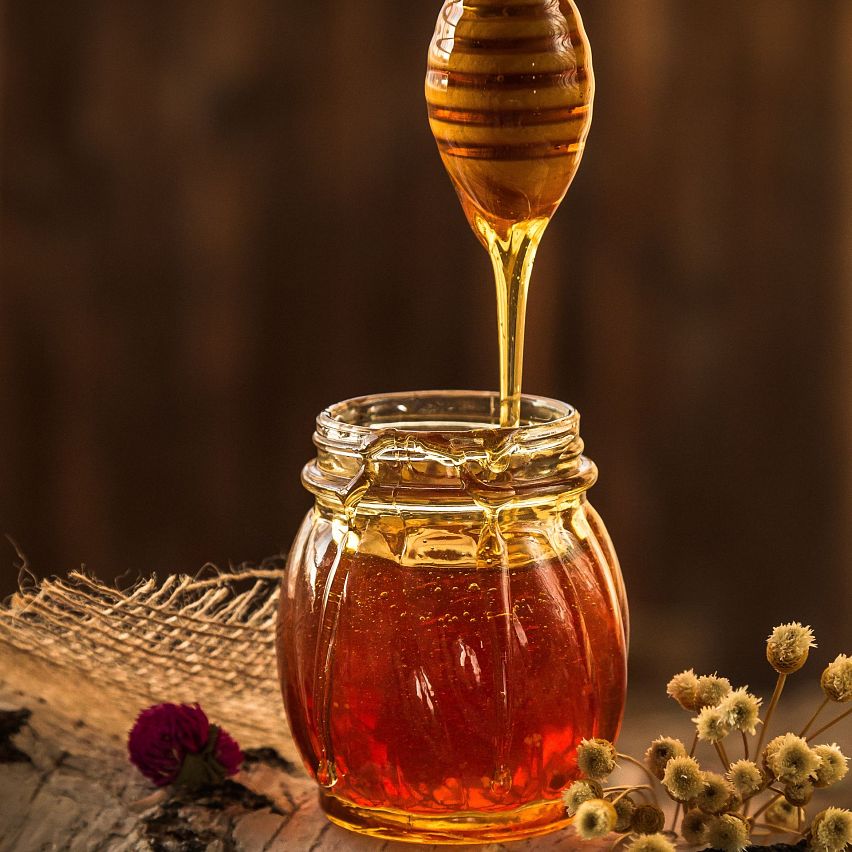
THE DARK GOLD OF THE FOREST
From Honeydew to Forest Honey
Forest honey is not made from collected flower nectar but from honeydew, the secretion of plant sap-sucking insects. Forest honey, therefore, has a special status among honey varieties. It has a dark color and a particularly spicy aroma.
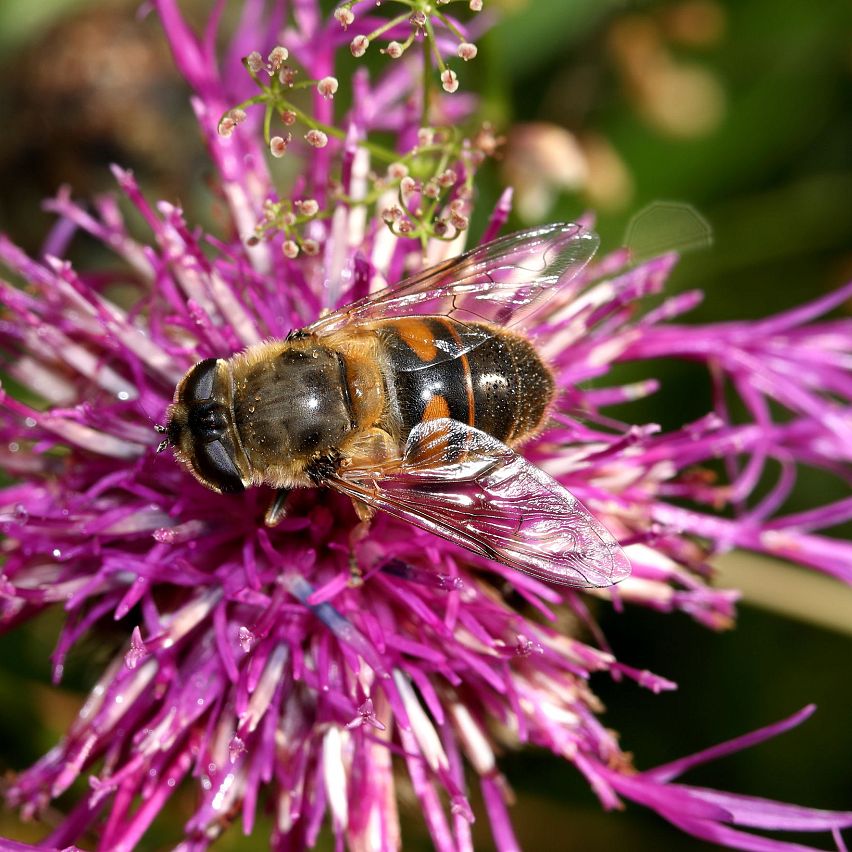
MIMICRY IN THE INSECT KINGDOM
Artists of Deception
Unlike bees, flies only have one pair of wings. Some fly species imitate the appearance of wasps or bees to act as a deterrent — this is called mimicry. A particularly beautiful example is the dung bee.
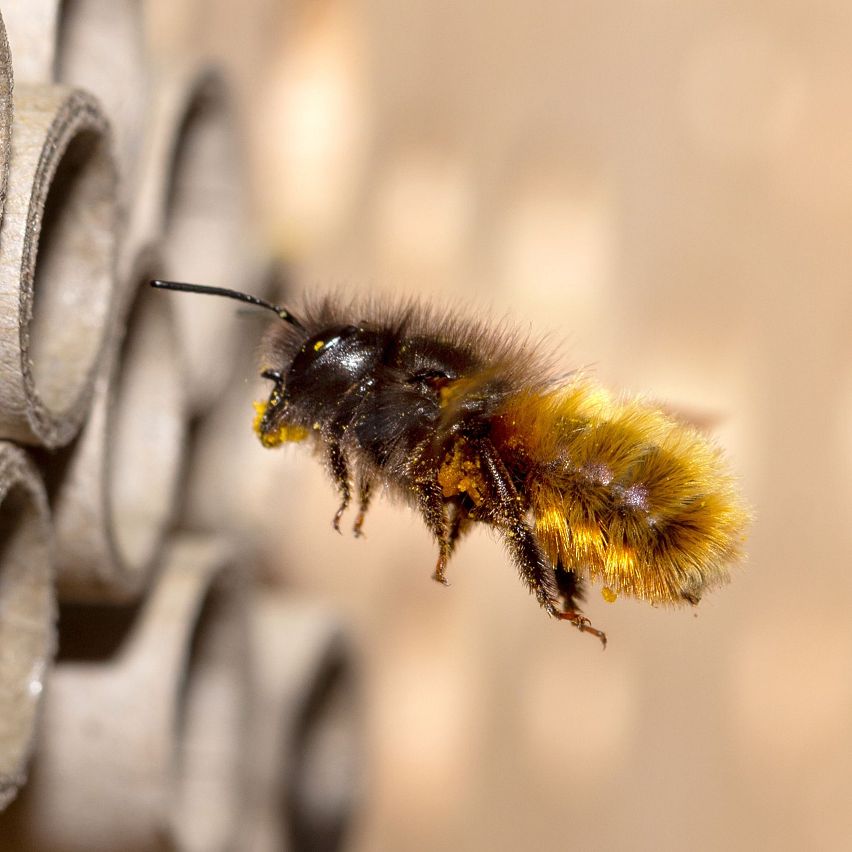
THE MANY HELPERS IN THE ECOSYSTEM
The Invaluable Role of Beneficial Organisms
What are beneficial organisms? A beneficial organism is an organism that is beneficial to the environment and/or humans—particularly by controlling pests, pollinating plants, or improving soil quality. Well-known examples of beneficial organisms are (wild) bees, ladybirds, bats, hedgehogs, and earthworms.
Beneficial organism finder!
Can you think of any more beneficial organisms?

THE NATURAL FOREST RESERVES IN THE KARWENDEL
Primeval Forests on a Small Scale!
In the Karwendel Nature Park, there is not only an abundance of different types of forests but also some very old and valuable forest stands. It is, therefore, a declared goal of the nature park to preserve these old forest stands. So-called natural forest reserves and cells are established for this purpose.
Natural forest reserves are primeval forest areas intended for the natural development of the forest ecosystem, where no direct influence is exerted. They contribute to the conservation and natural development of biodiversity and are used for research, teaching, and education. To date, there are 542 hectares of natural forest reserves in the Karwendel Nature Park (as of February 2024)—with more to follow!
For further information on rare forest communities in the natural forest reserve.
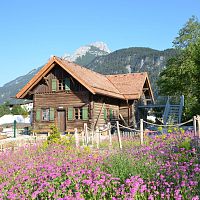
If you would like to learn more about historical woodworking here in the Karwendel, why not visit the Holzerhütte museum in Scharnitz?
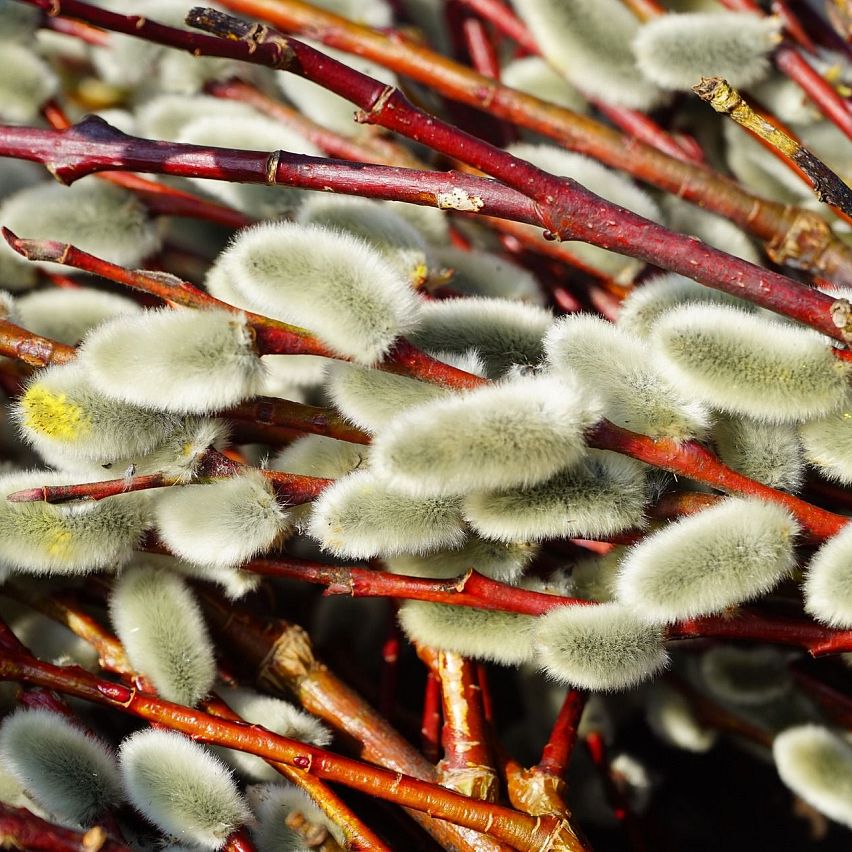
THE FAVOURITE
Sal Willow
– Salix caprea –
- Characteristics: Grows as a shrub or tree, up to 9 meters tall, with male and female flowers on different plants (dioecious). Flowers appear before the leaves emerge.
- Habitat: Forest slopes, forest edges, open ground, from the valley floor to the alpine level.
- Use: Plays an important role for insects and birds. Flowering willows provide nectar and pollen in spring, while buds serve as bird food in winter. Leaves and emerging aphids serve as larval food.
- Blooming time: February to April.
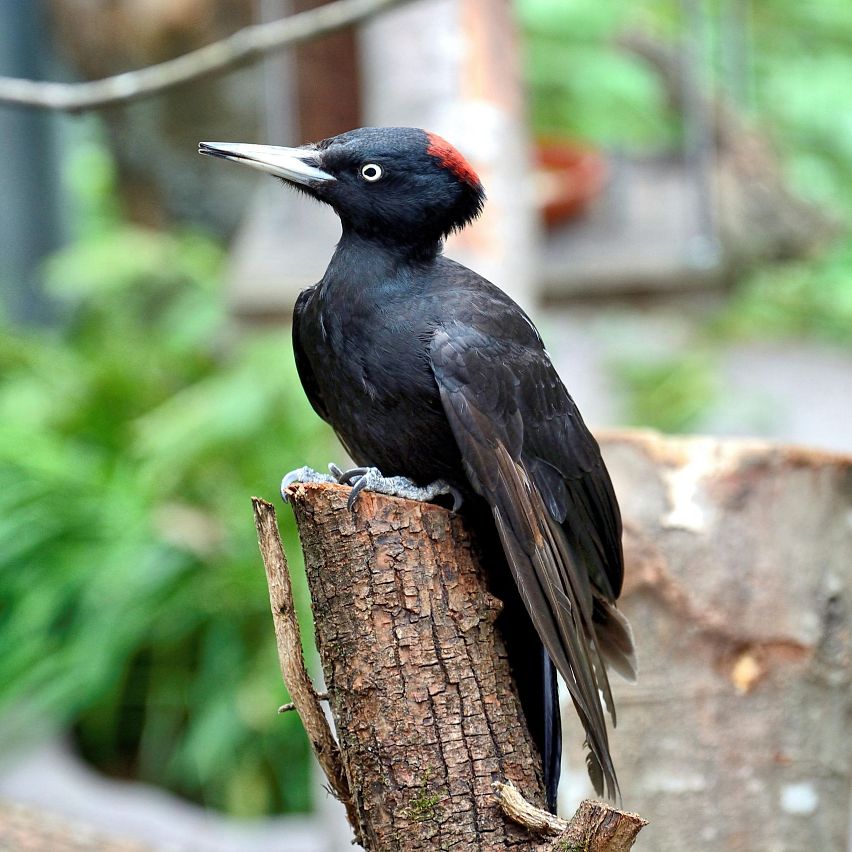
THE DRUMMELER
Black Woodpecker
– Dryocopus martius –
- Characteristics: Up to 46 cm, the largest woodpecker in Europe, with black plumage and a bright red crown (male) or red neck patch (female).
- Habitat: Coniferous and mixed forests with stands of old beech and pine trees.
- Way of Life: It "carpenters" a new, high-altitude, 30 to 55 cm deep nest cavity in old trees every year. It lays up to 6 eggs there at the end of March. The young birds leave the nest after 28 days. This is then inhabited by other cave breeders, wild bees, bats, or dormice. It feeds on insect larvae and pupae that live on the tree (e.g., bark beetles and longhorned beetles) as well as spiders, ants, and small snails.
- Observation Tip: Males attract attention with a loud "drum roll" to mark their territory; during the mating season, a 10- to 20-syllable "love call" can also be heard.
- Observation Time: All year round.
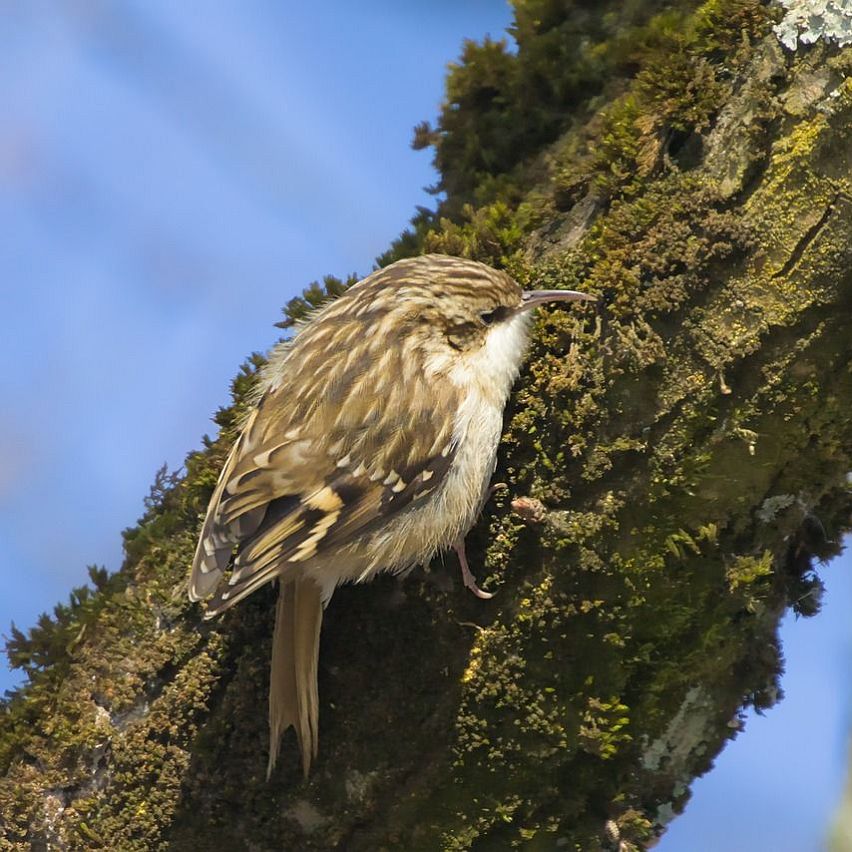
THE CLIMBER
Woodcreeper
– Certhia familiaris –
- Characteristics: 12 to 13 cm tall, 9 g light, one of the smallest birds in Central Europe, with a silvery-white underside of the belly, brown upper side and crown with white-beige spots, long curved bill, and elongated hind toe.
- Habitat: Wooded areas (coniferous, deciduous, and mixed forests), parks, and green spaces.
- Way of Life: The breeding season is from March to July. Up to 8 young birds leave the nest after 14 days but are looked after for a longer period of time. The nest is located behind loose tree bark. For food, it pecks for spiders and insects under tree bark with its curved beak, using its long hind toe and stiff hind feathers to support itself on the trunk. It climbs up the bark in jerky, small jumps and flies to the foot of another tree once it reaches the top. It runs up to 3 kilometers up trees every day!
- Observation Tip: Good to see when foraging on tree trunks.
- Observation Time: All year round.